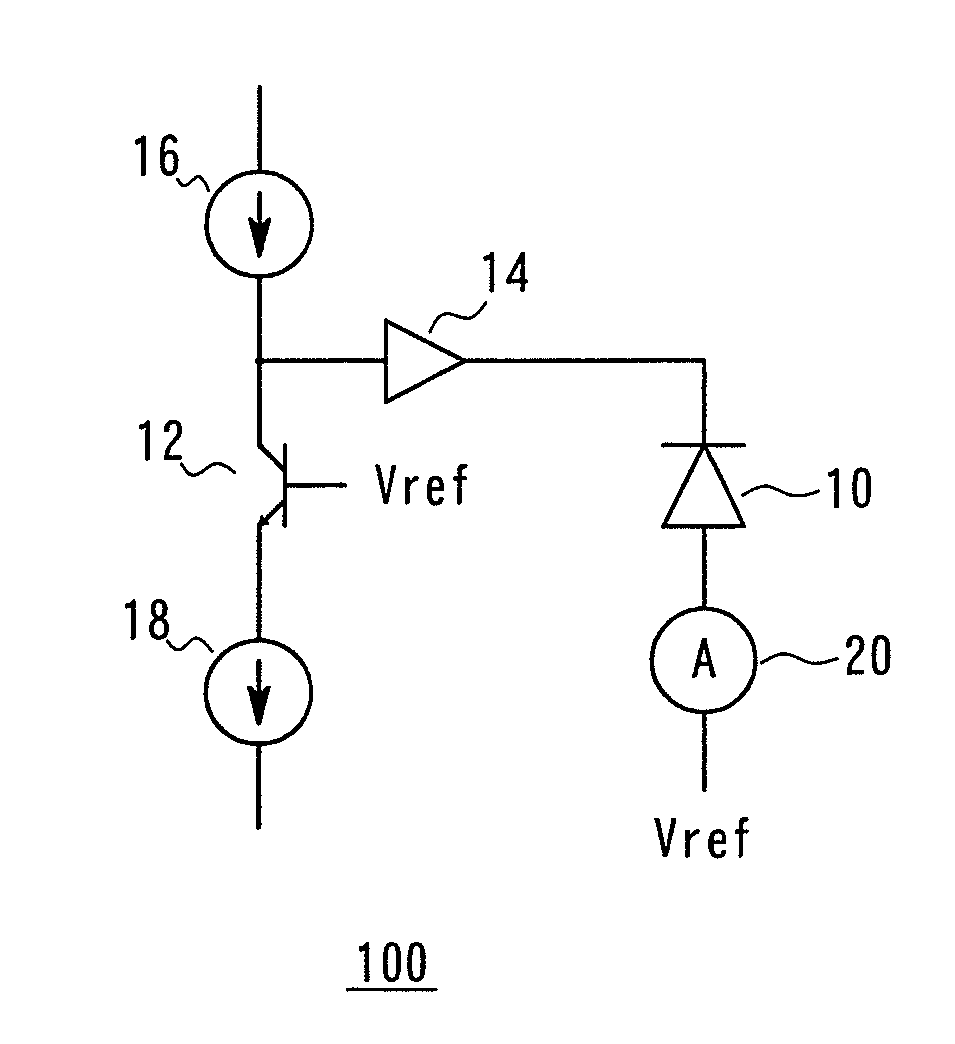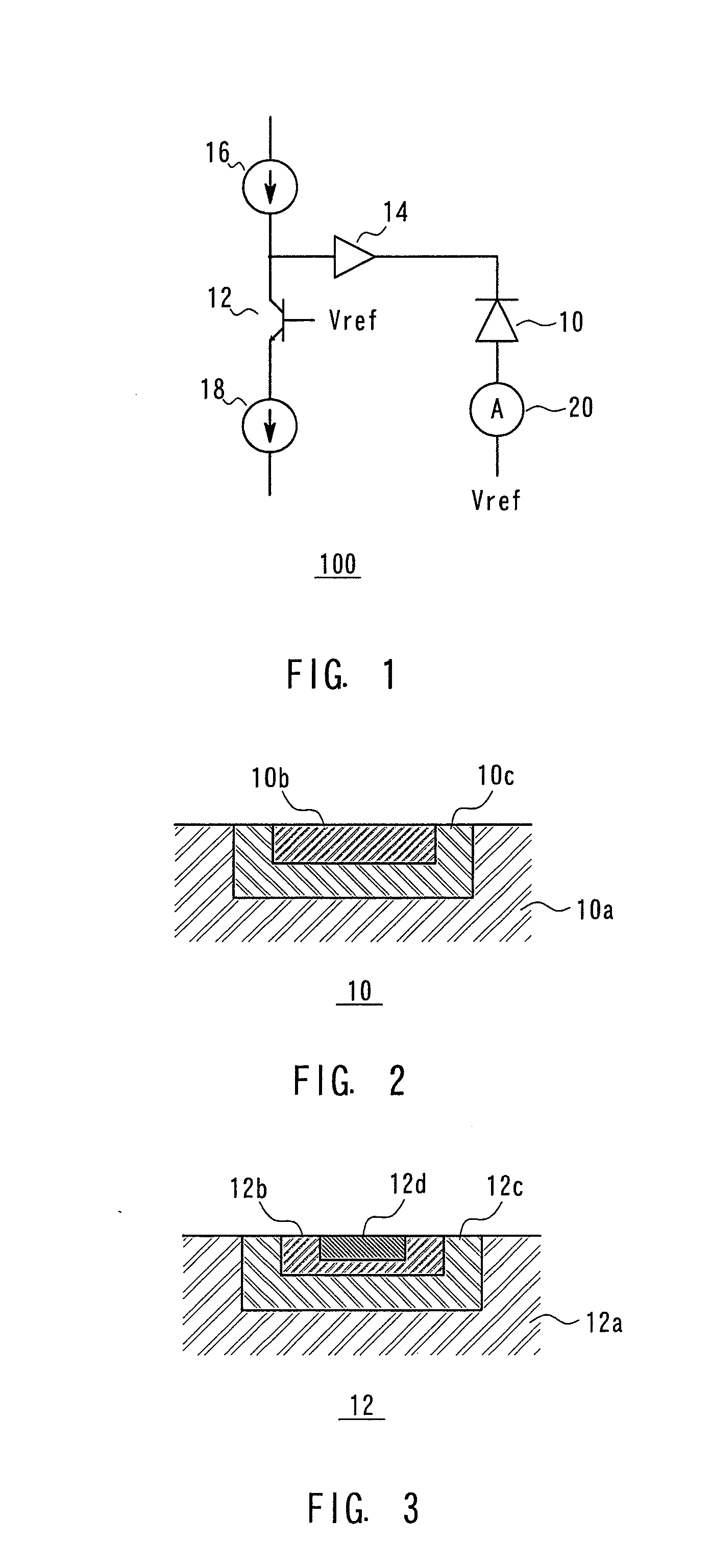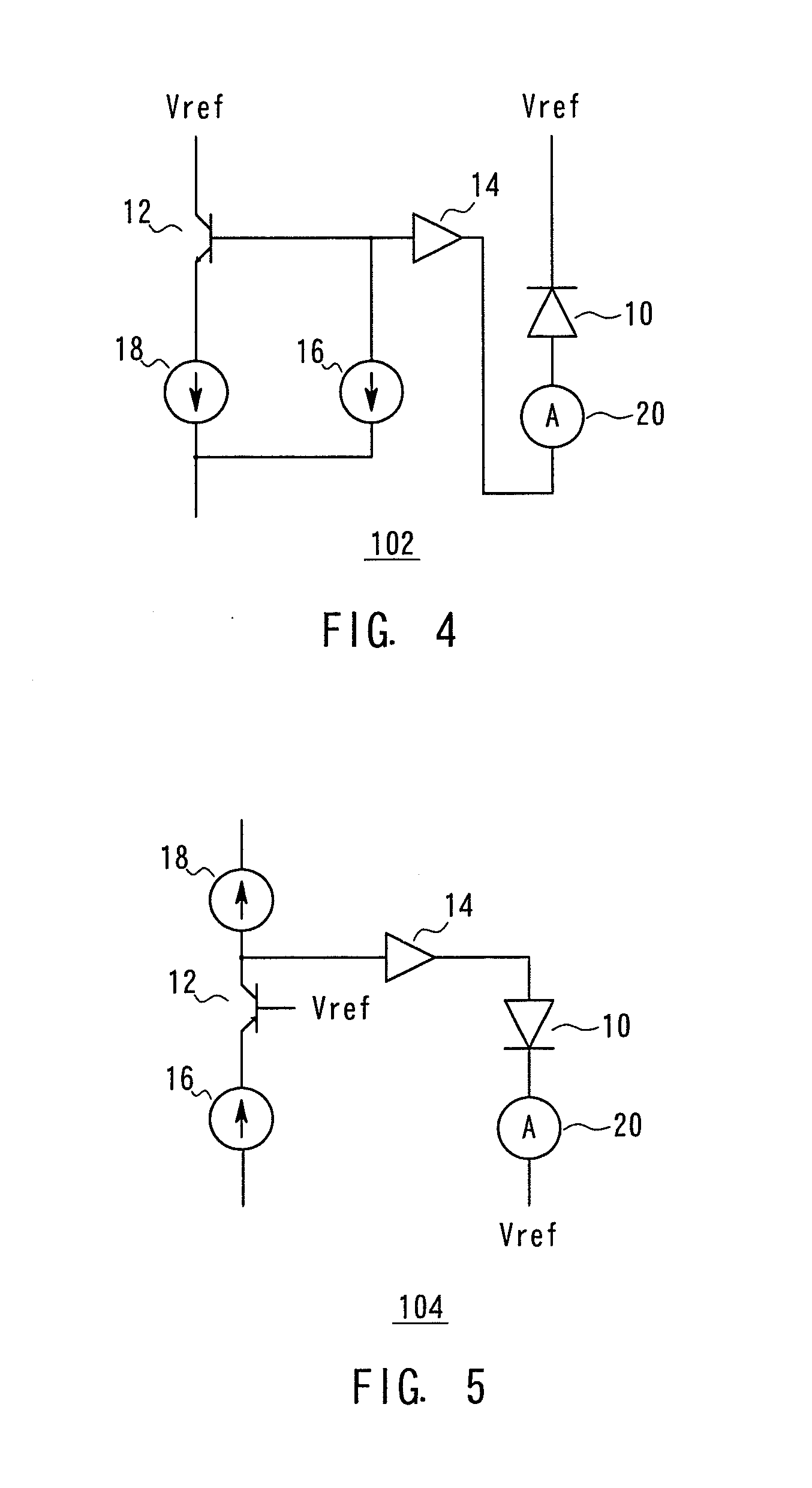photodetector
a photodetector and photoelectric technology, applied in the field of photodetectors, can solve the problems of large error in multiplication factor, difficult to precisely control the temperature dependence of apd, and cannot cope with changes in other environmental factors
- Summary
- Abstract
- Description
- Claims
- Application Information
AI Technical Summary
Benefits of technology
Problems solved by technology
Method used
Image
Examples
first embodiment
[0032]A photodetector 100 comprises, as shown in FIG. 1, an avalanche photodiode (APD) 10, an avalanche transistor (AT) 12, a buffer element 14, a first current source 16, a second current source 18 and an ammeter 20.
[0033]The APD 10 comprises, as shown in a cross-sectional view of elements in FIG. 2, a semiconductor substrate 10a, a first well 10b, and a second well 10c. As the semiconductor substrate 10a, there can be utilized a silicon substrate, a gallium arsenide substrate or the like. The second well 10c is formed by adding a dopant of a conductivity type opposite to that of the semiconductor substrate 10a, to the surface area of the semiconductor substrate 10a. The first well 10b is formed by adding a dopant of a conductivity type opposite to that of the second well 10c, into the forming area of the second well 10c formed on the surface area of the semiconductor substrate 10a, more shallowly than in the case of the second well 10c. Consequently, the first well 10b and the se...
second embodiment
[0072]On the other hand, in an identical manner to the photodetector 200 in the constitution of the second embodiment, the photodetection is performed by applying light to the collector-base junction of the AT 12. Here, if a signal light frequency is sufficiently higher than an AC reference current frequency, a photoelectric current can be separated from a current based on the AC reference current Iac, followed by detection.
[0073]Also in the constitution of the present embodiment, connection to the collector of the AT 12 may be performed. Further, also in the constitution of the present embodiment, the reference current and the signal current are separated from each other by a frequency division system, but the separation may be performed by a time-sharing system. Furthermore, the AT 12 may be a transistor having a structure as shown in FIG. 8. In addition, in the constitution of the present embodiment the AT 12 is an NPN transistor, but it may be a PNP transistor as in the case of ...
PUM
 Login to View More
Login to View More Abstract
Description
Claims
Application Information
 Login to View More
Login to View More - R&D
- Intellectual Property
- Life Sciences
- Materials
- Tech Scout
- Unparalleled Data Quality
- Higher Quality Content
- 60% Fewer Hallucinations
Browse by: Latest US Patents, China's latest patents, Technical Efficacy Thesaurus, Application Domain, Technology Topic, Popular Technical Reports.
© 2025 PatSnap. All rights reserved.Legal|Privacy policy|Modern Slavery Act Transparency Statement|Sitemap|About US| Contact US: help@patsnap.com



